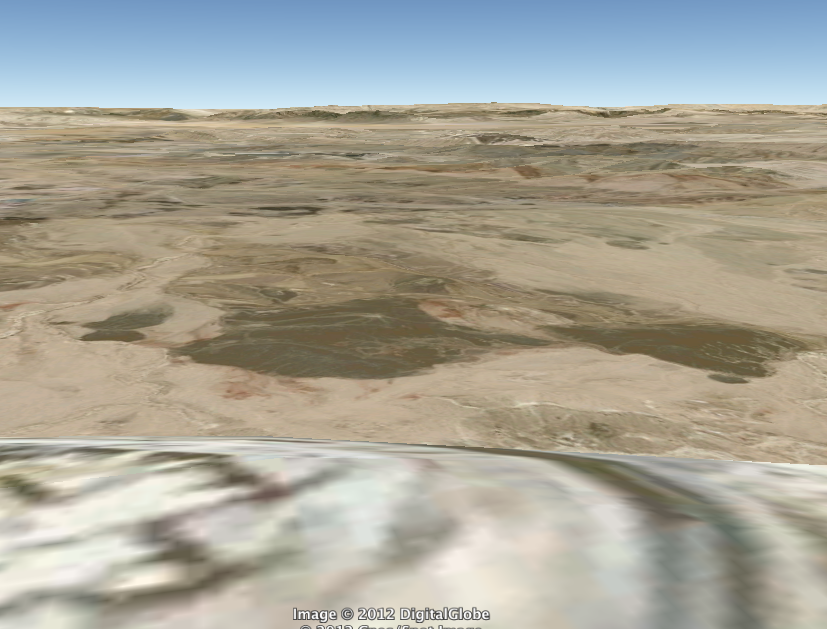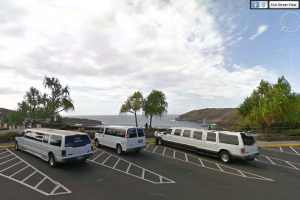In my sophomore year of high school, I took a trip with my family to San Fransisco, California. While we were there, we decided to visit Muir woods, a national park full of historic California Redwood trees. Muir Woods is one of the most beautiful, breathtaking places I have ever been.
As I began walking through the woods, I noticed that something felt different. After walking for a few minutes, admiring the beautiful scenery, I noticed that it was the air. I took deep breaths, and while the air was a bit chilly, it was so…pure. I had never truly experienced “a breath of fresh air” until I went to Muir Woods. Being surrounded by so much nature wasn’t only easy on the eyes, but also on the lungs. It was as if my body was rejoicing about being in a place simply bursting with life. I could feel the fresh air enter by body with each breath I took, and when I exhaled I felt clean and refreshed, like the trees were erasing the impurities from my body.
- Through Google Earth, I can only get a true concept of the space by using the Street View tool. I can examine the trees that are on the edge of the woods, but I cannot explore deep into the woods where the true patterns of nature are without seeing flat patches of green. To experience the life happening in the heart of the woods, I must rely on pictures that other people have posted, but I cannot physically tour it. The pictures are beautiful, and the trees stand just as magnificently virtually as they do physically. But these images are not enough to satisfy me.
I was amazed by the trees in Muir Woods. They aren’t just normal trees–they’re ancient and magnificently tall, like nature’s skyscrapers. You have to arch you back to see the tree tops. The leaves dance in the breeze, and the green stands out brightly against the blue of the sky. The trunks are massive–you could attempt wrap your arms around them, but it’s impossible, and you simply look silly trying. The trees in these woods are a piece of history, and it’s amazing to think that they have been around for so long. It’s hard to imagine these bold landmarks as being small saplings at some point. They stand so tall and proud–they almost appear regal as the sun illuminates them as if they have halos.
- Through Google Earth, I can still get a good sense of how large these trees are. Street View and pictures uploaded by other people aid me in my visualization. The green of the leaves still stands out against the blue of the sky, and their impressive height is still understood. But because I cam not physically there, I cannot picture how tall the trees are in comparison to myself. I can see how high up the branches are, but I cannot sense them far above my head.
I encountered animals in these woods as well. I saw deer, chipmunks, birds, and much more. I remember thinking, “How lucky, these animals must be, to have these magnificent woods as their home.” What better home could you have? The air is fresh, the scenery is beautiful, and hollows in the large, sturdy trunks provide good shelter. And the best part is that it is protected from harm. This place of beauty and wonder cannot be harmed by the hands of humans. It truly is a sanctuary, a green paradise away from a world of chaos.
- If only Google Earth could allow me to explore the heart of the woods, then perhaps I would be able to feel this sense of sanctuary virtually. Instead I am confined to the edges of the woods by the road, where cars and civilization can still be seen. There aren’t any animals present, and if there were, they would probably be in danger from being so close to the road. The significance of Muir Woods really isn’t understood through Google Earth. When streets and cars are in the view, it ruins the idea of tranquility I know I should feel.
Ultimately, going back to Muir Woods via Google Earth is just simply not the same. While Google Earth is a very useful tool in traveling the globe virtually, it cannot capture the emotions that come with the space. Through Google Earth, you can utilize the Street View tool to get an up-close picture of the space. You can see the the trees, and pan the camera up to get a sense of how incredibly tall they are. But that’s the thing…you can only see it. You can’t take that breath of fresh air, or feel the impurities leave your body. You can’t duck your head into a big hollow and hear your voice echo in the massive trunk. And you can’t feel the strain in your muscles as you arch your back to see the treetops, or the blinding light of the sun once you do. With Google Earth, you can see the space, but you can’t truly experience it. This is why I think literature is beneficial. With literature, while you can’t physically show people the space, you can paint a picture of it with words and phrases designed specifically to help people imagine the place and the emotions that come with it. What would make a Google Earth tour even better would be if there was some type of narrative that went along with it. That way, we could see the space virtually, but also feel it as well.



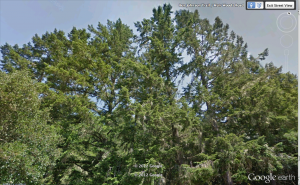


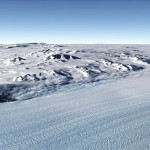








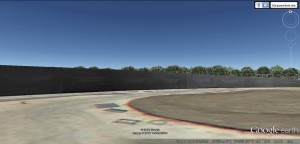





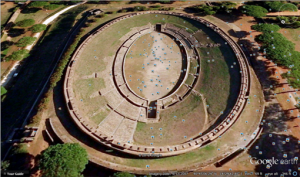



 I went to the base of a mountain. To my tired eyes, it seemed more like a giant mound of dirt. I could see paintings on the side of it. It was probably drawn with some sort of clay many years ago. It looks a lot like a tribe of Native Americans out hunting. Whatever this masterpiece portrays, I hope that it will remain there in History for other travelers to marvel at. I finally waited a few hours for the sun to go down some before attempting to scale the mountain. There is no way I want to be any closer to the mid day sun than I have to. I reached the top in time to see the sun retreat back under mountains and mesas to the West. The sky was filled with dazzling hues of pink and orange. It was calm and serene like a bouquet of flowers. As I reached the bottom of the mountain, I was met with another surprise. What lie only a few yards ahead of my appeared to be an abandoned town. I ventured closer. I dusted off the sign to one of the buildings to see “Hyder Sheriff’s Department” written in bold red letters.
I went to the base of a mountain. To my tired eyes, it seemed more like a giant mound of dirt. I could see paintings on the side of it. It was probably drawn with some sort of clay many years ago. It looks a lot like a tribe of Native Americans out hunting. Whatever this masterpiece portrays, I hope that it will remain there in History for other travelers to marvel at. I finally waited a few hours for the sun to go down some before attempting to scale the mountain. There is no way I want to be any closer to the mid day sun than I have to. I reached the top in time to see the sun retreat back under mountains and mesas to the West. The sky was filled with dazzling hues of pink and orange. It was calm and serene like a bouquet of flowers. As I reached the bottom of the mountain, I was met with another surprise. What lie only a few yards ahead of my appeared to be an abandoned town. I ventured closer. I dusted off the sign to one of the buildings to see “Hyder Sheriff’s Department” written in bold red letters. I was right on the city line for Hyder, Arizona. This is one of America’s ghost towns that was very prosperous in the Old West. The sun was almost set and I could already feel my nerves become tense. The howling wind was nowhere as terrifying as the howling coyote I heard over the mountain I had just trekked. If I ever want to tell others about my discovery of this ghost town, I must make it back home before I become a permanent resident of this place.
I was right on the city line for Hyder, Arizona. This is one of America’s ghost towns that was very prosperous in the Old West. The sun was almost set and I could already feel my nerves become tense. The howling wind was nowhere as terrifying as the howling coyote I heard over the mountain I had just trekked. If I ever want to tell others about my discovery of this ghost town, I must make it back home before I become a permanent resident of this place.



